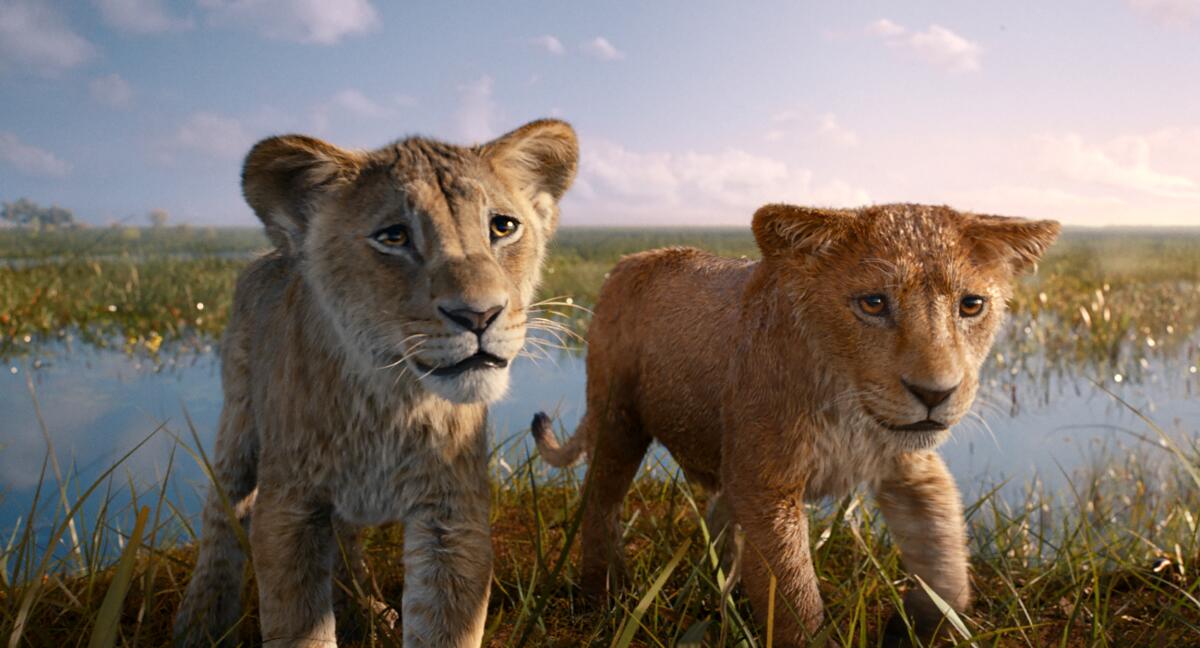This article contains spoilers for the movie “Mufasa: The Lion King.”
“Mufasa: The Lion King” is a prequel to the animated 1994 movie and its 2019 remake. Directed by Barry Jenkins and featuring songs by Lin-Manuel Miranda, the film traces how Mufasa came to be king of the Pride Lands, and why Scar ended up so bitter and vengeful toward his older brother.
“There’s so many things that you get to play with here, but you have to be careful because people are so emotional about the original, and the reactions are going to come from every direction,” said screenwriter Jeff Nathanson. “There were probably 10 other things that were left out and 10 other things we could’ve done. But the original movie really mattered to all of us, and we tried to honor it as best we could.”
Nathanson walked The Times through the questions “Mufasa” answers about the original “Lion King” movie:
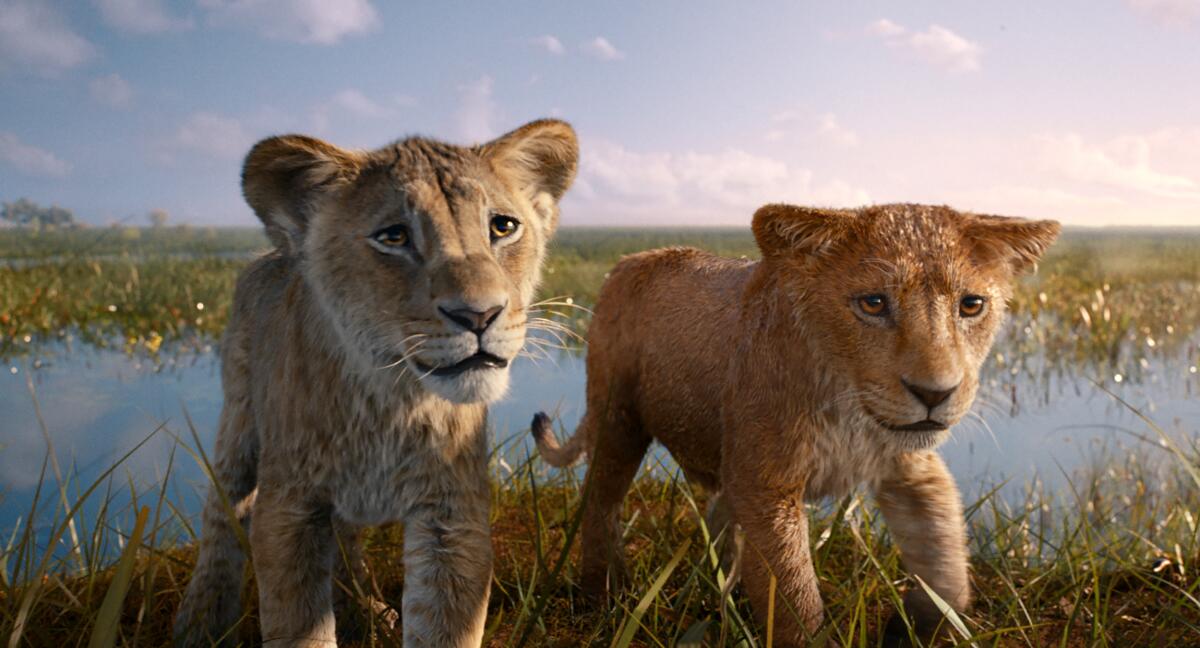
Taka and Mufasa as young cubs in “Mufasa: The Lion King.”
(Disney/Disney Enterprises)
How did Mufasa and Scar become brothers?
The movie recounts how, as a cub, Mufasa was traveling with his parents when he was suddenly swept away by river rapids in a flash flood. The orphan is then discovered by another young lion, Taka, who convinces his mother to take him into their pride. (As discussed in more detail below, Taka was Scar’s name before his fall from grace.)
“Mufasa’s worldview, compassion and empathy — all of these things felt very different than what you’d expect from a king,” said Nathanson. “I thought maybe his upbringing wasn’t as traditional as one might think. What happened to him, and how did he end up being somebody who was a wise and powerful leader, but also such a great father?”
But Taka’s father, a king who prioritizes royal lineage, isn’t pleased, referring to Mufasa as the “stray” and forcing him to be raised by the lionesses. Nevertheless, Taka is thrilled to have a sibling and a new best friend, and sweetly vows to protect their bond forever.
“It’s very much a love story between these two brothers,” added Nathanson. “We wanted to really capture what it’s like when you’re young and you have somebody who understands you more than anybody else. It’s bittersweet because you know what’s going to happen and where it’s all headed, but at least for this moment in time, everything was OK.”
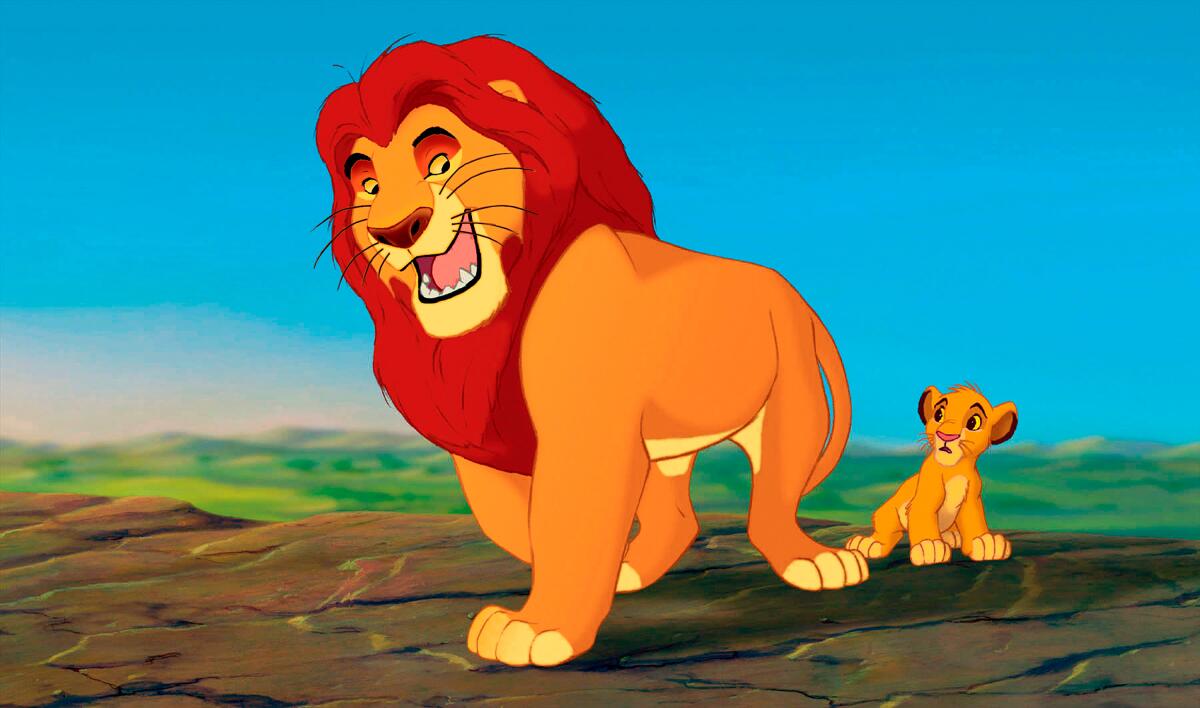
Mufasa and Simba in the 1994 movie “The Lion King.”
(Disney)
What did Mufasa’s cliffside climb once mean?
Fans of the 1994 movie know the moment well: in the midst of a chaotic stampede set off by Scar, Mufasa attempts to climb up a cliff and calls out to his brother to help pull him up. Instead, Scar digs his claws into his paws and flings him to his death.
The interaction that ends Mufasa’s life in “The Lion King” is actually what saves him in “Mufasa.” Taka first places his claws into Mufasa’s paws to pull him up from the river and narrowly evade some hungry crocodiles. (Later on, the two cubs even make jokes about stampedes.)
“It’s a signature and very traumatic memory of the original, and we wanted to lean in and say, this didn’t always have the same connotation,” said Nathanson of redefining the visual. “We’re trying to play with your memories and your expectations, giving people enough of what you know and came for but also surprise you with new things.”
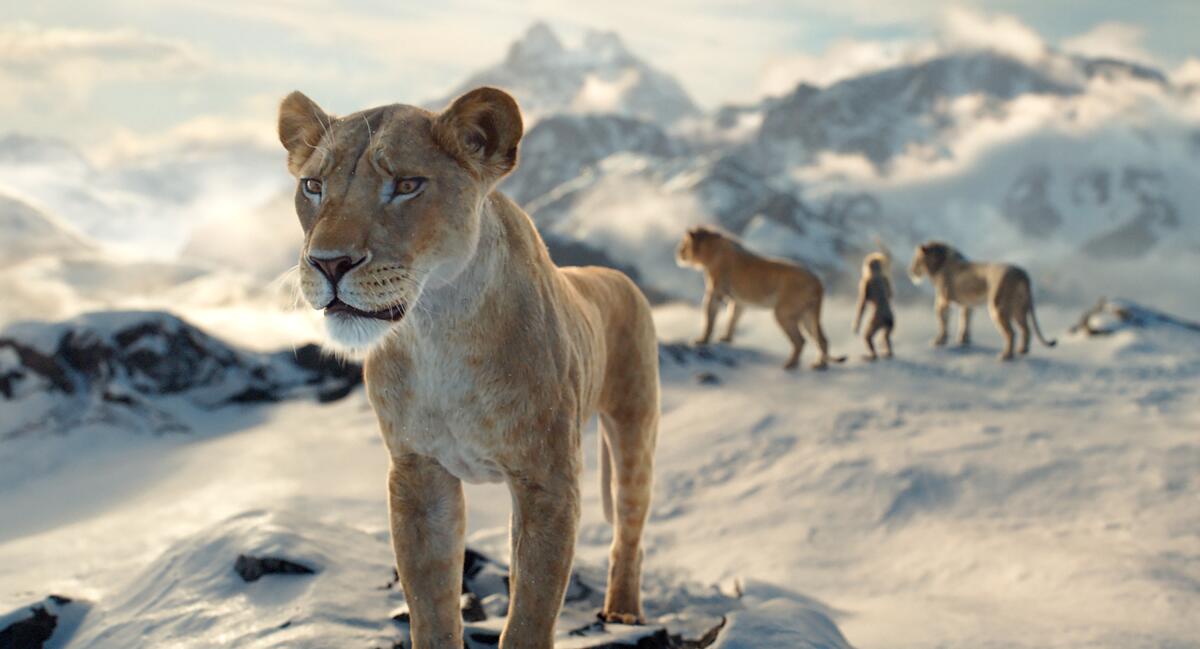
Sarabi, Mufasa, Rafiki and Taka in “Mufasa: The Lion King.”
(Disney/Disney Enterprises)
How did Mufasa and Taka fall out?
“Mufasa” outlines how their brotherly bond wasn’t fractured in just one way. Because Mufasa, as an unwelcome “stray,” was forced to be raised by the pride’s lionesses, he grew close to Taka’s mother and accompanied her while hunting. At one point, he saves her from an attack by another pride — a gesture that finally wins the favor of Taka’s father. (Taka, who was nearby when his mother was being attacked, fled in fear.)
Under threat from that violent competing pride, Taka‘s father commands him to flee for his safety, with Mufasa as his protector. They meet a wandering lioness, Sarabi (Tiffany Boone), and though both boys fall in love with her, she eventually favors Mufasa. Taka — having been passed over for Mufasa by his mother, father and crush — feels too deeply betrayed by the brother he took in all those years ago, the one who now has all of what he believes should be his.
“It was important to Barry that it was something that wasn’t abrupt, but evolved and layered,” said Nathanson. “Barry is very intentional with his visuals, and there are great shots of Taka just watching Mufasa with his mother, and you can start to see the wheel spinning even then. We hoped it would build for the audience over the course of the movie.”
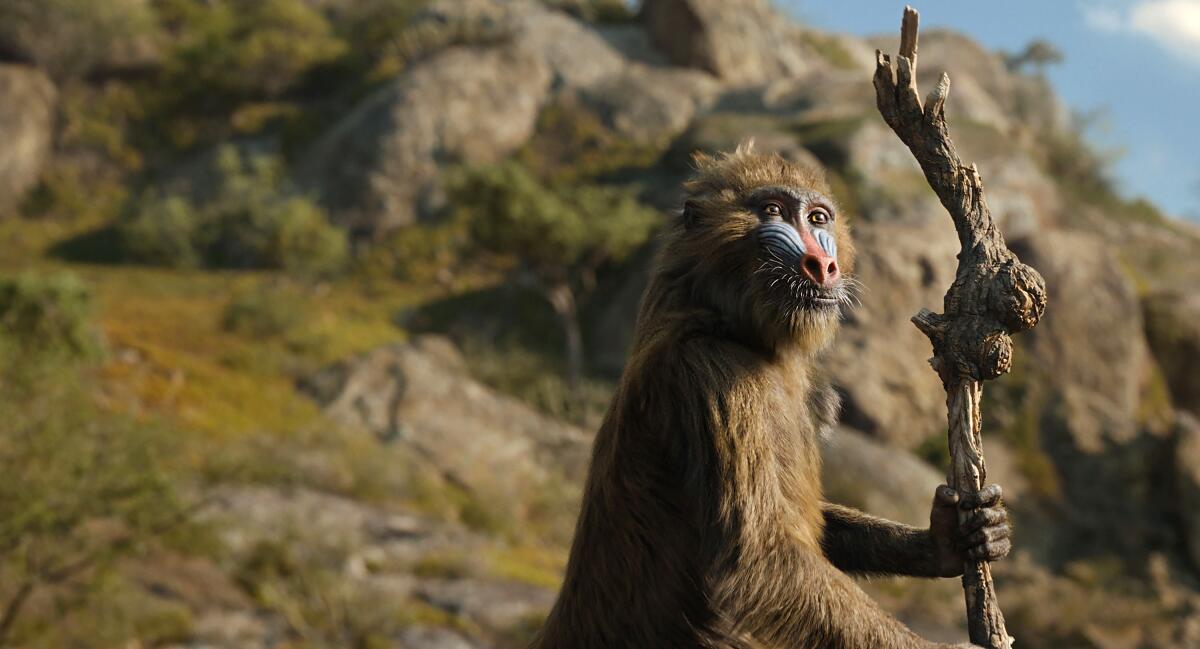
Young Rafiki in “Mufasa: The Lion King.”
(Disney)
Where did Rafiki come from?
“Mufasa” also shows that the wise mandrill Rafiki (John Kani), who was born with a limp, was previously ostracized by a troop of baboons because his visions predicted that their home would be repeatedly attacked by a cheetah. Even though Rafiki often helps his fellow primates by healing them and leading them to water in the dry season, they believe his powers are nefarious and vote to banish him.
Rafiki then crosses paths with Mufasa, Taka, Sarabi and her familiar, flying protector Zazu (Preston Nyman), and the five of them proceed as a motley crew of wanderers. “They all only have a few scenes together, but they’re lovely moments because you see how bonded they all are once they find each other,” said Nathanson. While they’re on the road, Rafiki finds his iconic walking stick and carries it all the way to their destination.
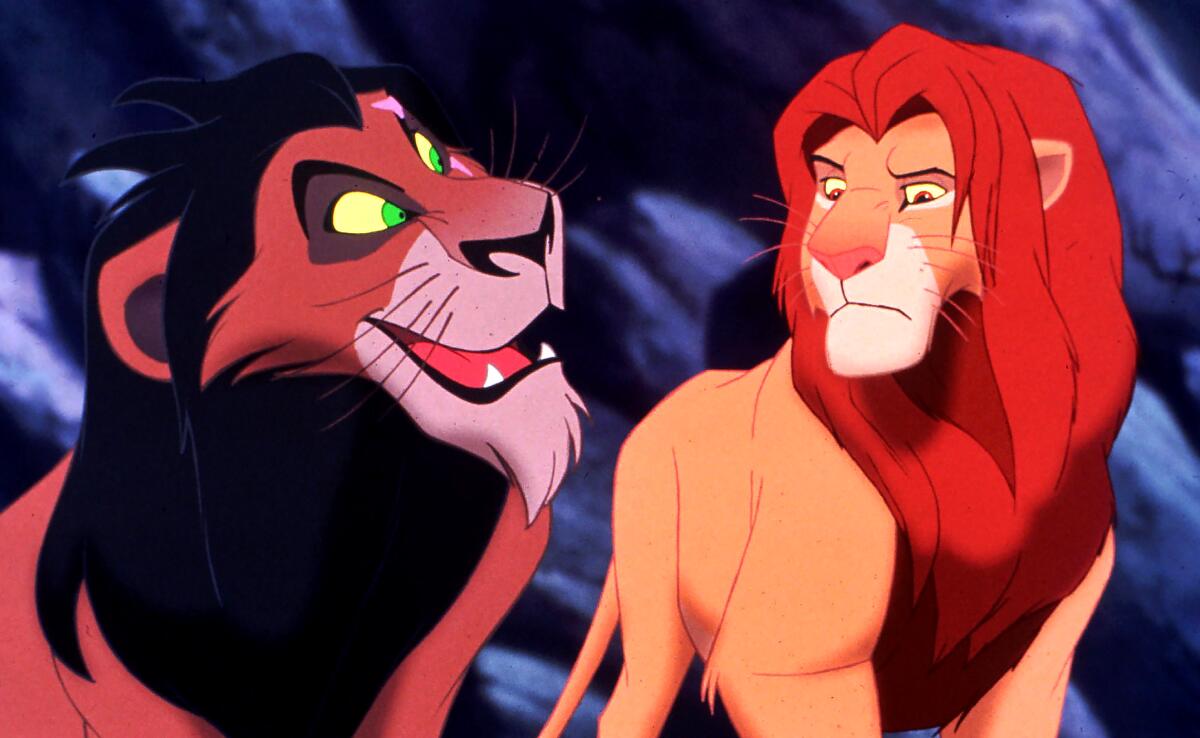
Scar and Simba in the 1994 movie “The Lion King.”
(Disney)
How did Taka get that scar?
In a malicious move against Mufasa, Taka tips off their group’s location to the leader of the violent pride, who wrongfully believes that Mufasa killed his son. The leader follows them to the peaceful Pride Lands and goes toe-to-toe with Mufasa, but just as the leader is about to strike, Taka remembers the time he didn’t rescue his mother and, in a moment of courage, leaps in front of Mufasa to take the leader’s attack on his face. The blow results in a massive scar.
“He’s betrayed his brother but, at this moment, he’s redeeming himself in some way,” said Nathanson. “A lot of thought went into it, and we needed it to be something that felt organic to the story. There were other versions we played around with, but when we got to this one, we all agreed that it felt right.”
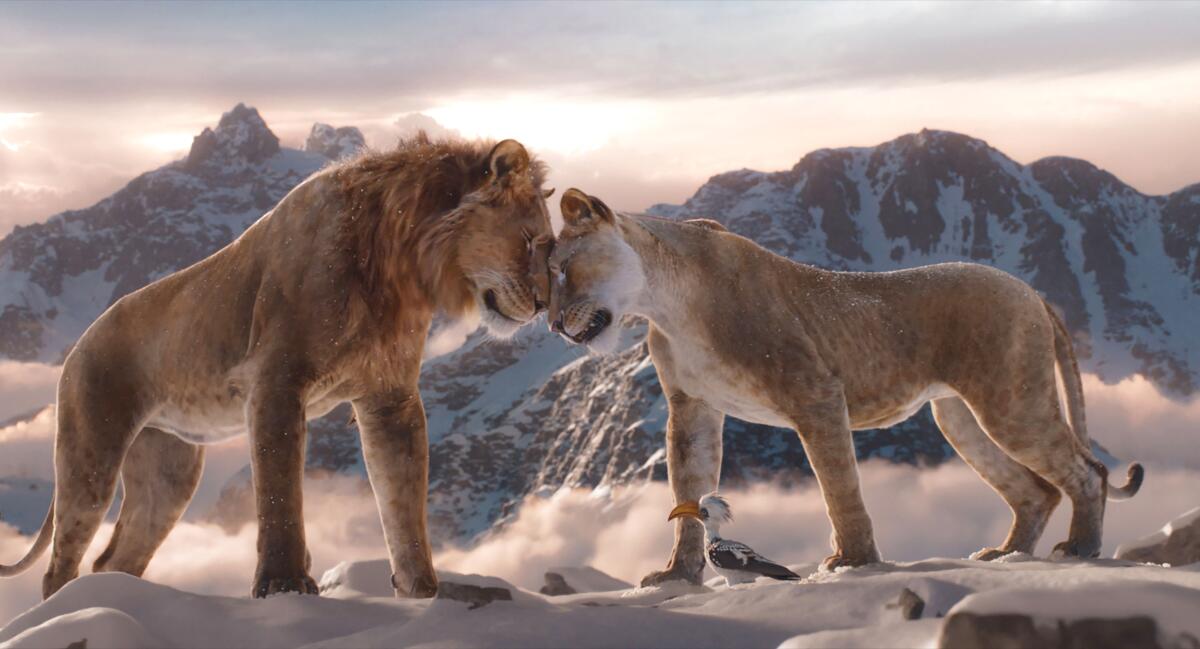
Mufasa, Sarabi and Zazu in “Mufasa: The Lion King.”
(Disney)
How did Mufasa become king of the Pride Lands?
When the violent pride is defeated, the resident animals of the Pride Lands are thankful to Mufasa for uniting them against the intruders and call for him to serve as their king. Mufasa initially turns down their offer, as he’s not of royal blood, but Rafiki explains: “It is not what you were, it is what you have become.”
As for Taka, who led the enemy to their refuge: Zazu calls for his banishment, but Mufasa vows always to give him a place in the kingdom, even if he can never say his name again. “Then call me Scar, so I will never forget what I have done,” Taka tells him.
“If you were to watch the films back-to-back, it allows you to understand why Scar is sitting in that cage with such a psychotic anger,” said Nathanson. “He truly is of royal blood, and he’s still clinging to that notion after all these years. And certainly, we as filmmakers are saying, the blood is not enough, but the character is.”
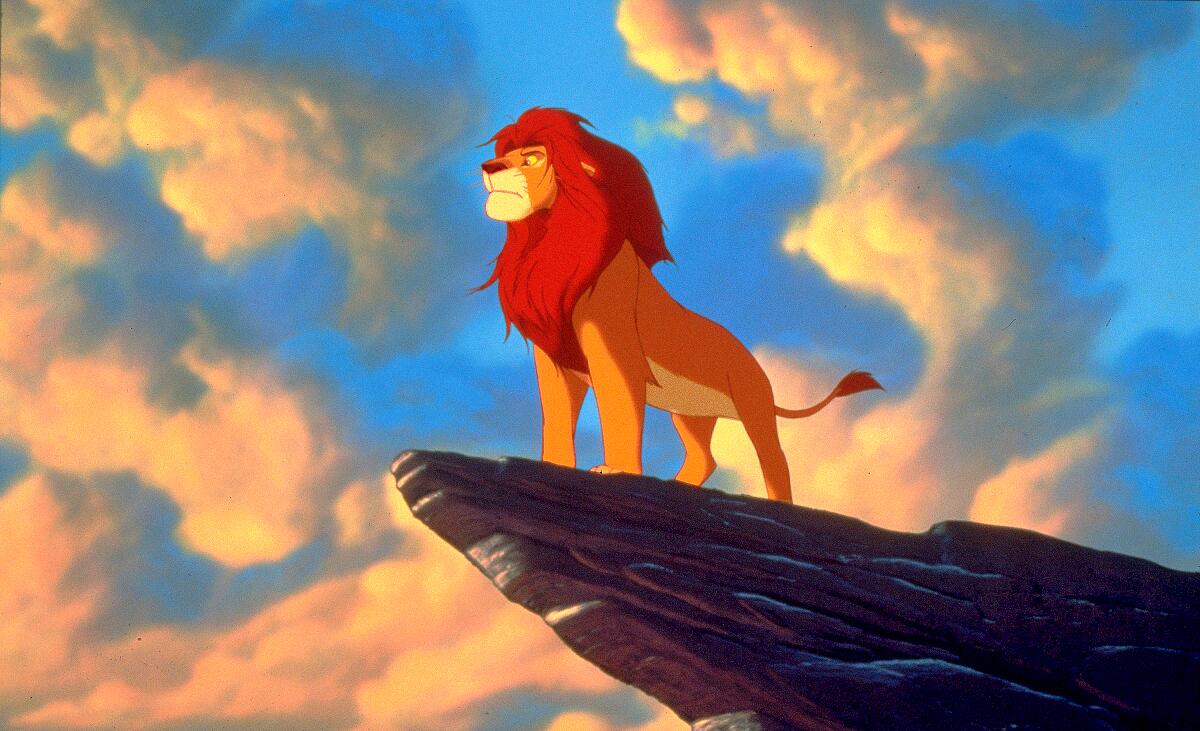
Simba standing on Pride Rock in the 1994 movie “The Lion King.”
(Disney)
How did Pride Rock come to be?
In the midst of that climactic battle, an earthquake hits the Pride Lands and a mountain shatters. What’s left is what fans of the original movie know as Pride Rock, the landing where the lion kings of the 1994 film address their subjects.
“In the script, Pride Rock was already there when they arrived,” said Nathanson, “and our production designer said, ‘What if, during the earthquake, it were to just pop down like that?’ It was just such a beautiful image and certainly a beautiful idea. And now, it’s one of my favorite little pieces of the movie.”
